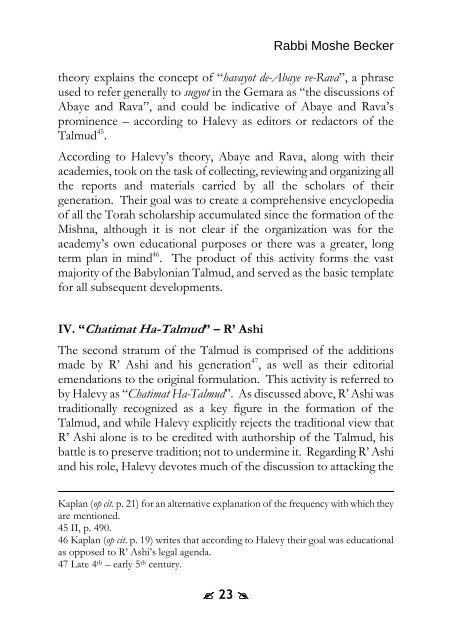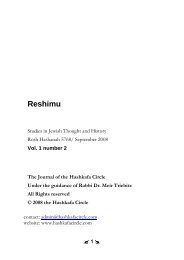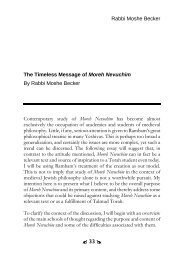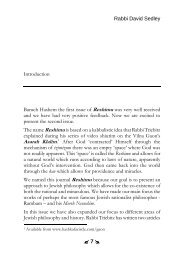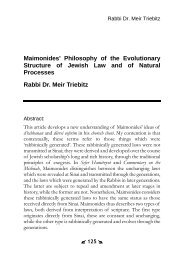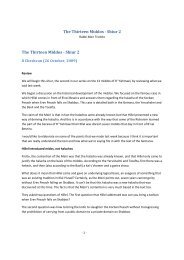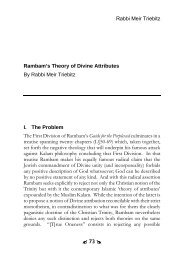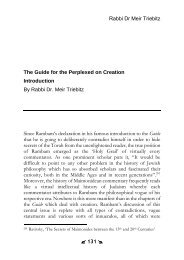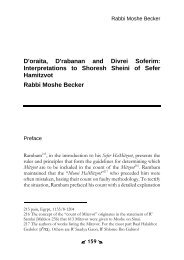Reshimu_3_journal_no.. - Hashkafa Circle
Reshimu_3_journal_no.. - Hashkafa Circle
Reshimu_3_journal_no.. - Hashkafa Circle
Create successful ePaper yourself
Turn your PDF publications into a flip-book with our unique Google optimized e-Paper software.
Rabbi Moshe Becker<br />
theory explains the concept of “havayot de-Abaye ve-Rava”, a phrase<br />
used to refer generally to sugyot in the Gemara as “the discussions of<br />
Abaye and Rava”, and could be indicative of Abaye and Rava’s<br />
prominence – according to Halevy as editors or redactors of the<br />
Talmud 45 .<br />
According to Halevy’s theory, Abaye and Rava, along with their<br />
academies, took on the task of collecting, reviewing and organizing all<br />
the reports and materials carried by all the scholars of their<br />
generation. Their goal was to create a comprehensive encyclopedia<br />
of all the Torah scholarship accumulated since the formation of the<br />
Mishna, although it is <strong>no</strong>t clear if the organization was for the<br />
academy’s own educational purposes or there was a greater, long<br />
term plan in mind 46 . The product of this activity forms the vast<br />
majority of the Babylonian Talmud, and served as the basic template<br />
for all subsequent developments.<br />
IV. “Chatimat Ha-Talmud” – R’ Ashi<br />
The second stratum of the Talmud is comprised of the additions<br />
made by R’ Ashi and his generation 47 , as well as their editorial<br />
emendations to the original formulation. This activity is referred to<br />
by Halevy as “Chatimat Ha-Talmud”. As discussed above, R’ Ashi was<br />
traditionally recognized as a key figure in the formation of the<br />
Talmud, and while Halevy explicitly rejects the traditional view that<br />
R’ Ashi alone is to be credited with authorship of the Talmud, his<br />
battle is to preserve tradition; <strong>no</strong>t to undermine it. Regarding R’ Ashi<br />
and his role, Halevy devotes much of the discussion to attacking the<br />
Kaplan (op cit. p. 21) for an alternative explanation of the frequency with which they<br />
are mentioned.<br />
45 II, p. 490.<br />
46 Kaplan (op cit. p. 19) writes that according to Halevy their goal was educational<br />
as opposed to R’ Ashi’s legal agenda.<br />
47 Late 4 th – early 5 th century.<br />
23


